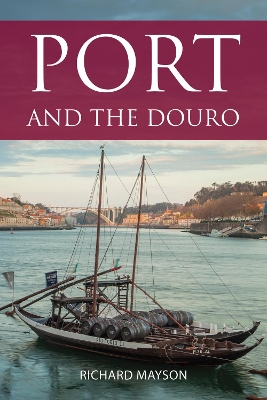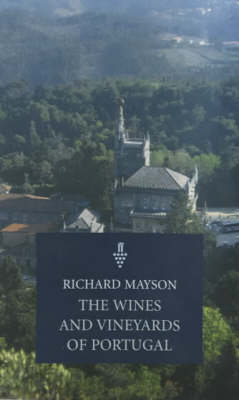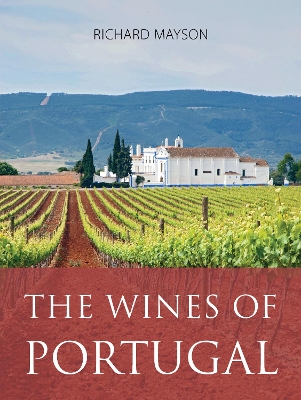Classic Wine Library
4 total works
Madeira wine is currently experiencing a renaissance. It is a wine that behaves like almost no other. Heat and air, the sworn enemies of most wines and winemakers, conspire to turn madeira into one of the most enthralling of the world's wines as well as the most resilient. Madeira wines from the nineteenth and even the eighteenth centuries still retain an ethereal, youthful gloss. Once the cork is removed, the wine comes to no harm, even if the bottle is left open and on ullage for months on end. If ever there was a wine to take to a desert island, this is it.
Although Madeira was only discovered in the fifteenth century, the island and the wine trade have a long and involved history. After a short historical introduction Madeira: The islands and their wines rounds on the present: the physical character of the archipelago, the state of the vines and vineyards and the way in which the wines are made. A guide to the current producers follows along with a detailed appraisal of their range of wines. There is also a chapter for collectors of older wines, many from shippers that no longer exist but whose names live on in bottles of wine that are still found in cellars all over the world. Wines dating as far back as the eighteenth century are featured in the book, along with quality appraisals.
Madeira is without doubt one of the most difficult wines to describe but it is certainly the most uplifting. There is a short section on the language of tasting madeira as well as information on buying, keeping and serving the wines. The book concludes with a travel guide for anyone visiting the islands. This unique book on the islands and their wines explains what it is that makes madeira so special. Madeira: The islands and their wines was shortlisted for the Andre Simon Food and Drink Awards 2015.
Although Madeira was only discovered in the fifteenth century, the island and the wine trade have a long and involved history. After a short historical introduction Madeira: The islands and their wines rounds on the present: the physical character of the archipelago, the state of the vines and vineyards and the way in which the wines are made. A guide to the current producers follows along with a detailed appraisal of their range of wines. There is also a chapter for collectors of older wines, many from shippers that no longer exist but whose names live on in bottles of wine that are still found in cellars all over the world. Wines dating as far back as the eighteenth century are featured in the book, along with quality appraisals.
Madeira is without doubt one of the most difficult wines to describe but it is certainly the most uplifting. There is a short section on the language of tasting madeira as well as information on buying, keeping and serving the wines. The book concludes with a travel guide for anyone visiting the islands. This unique book on the islands and their wines explains what it is that makes madeira so special. Madeira: The islands and their wines was shortlisted for the Andre Simon Food and Drink Awards 2015.
Richard Mayson's award-winning Port and the Douro, first published in 1999, has become a classic over the last 20 years. In this comprehensively updated fourth edition he reminds us why Port is a drink that continues to fascinate wine-lovers and win new fans.
The last 45 years, since the end of the dictatorship in 1974, have seen vast transformations in the Port world, from labour-saving technology in field and cellar, to advances in sales reach, especially since Portugal's formal entry into the EU in 1986, and ongoing changes in the way the industry is managed and regulated.
To begin with, Mayson provides a history of Port, from the beginnings of viticulture in Roman times to the present day. The vineyards and their vines as well as the quintas where they are cultivated are thoroughly explored, followed by an explanation of Port production, both traditional and modern. A short introduction to Port types prepares the reader for a detailed assessment of vintages from 1960-2017, some of which have been tasted afresh for this edition; notable vintages (both exceptional and poor) dating back as far as 1844 are also included. The structure of the Port trade remains in flux, and so the chapter on the shippers reflects recent changes in fortune and ownership. Douro wine, which pre-dates its fortified cousin and has seen its revival accelerate over the last 20 years, receives an entire chapter to itself. Finally, for those wishing to visit the region, there are some ideas on what to do and where to stay.
Peppered throughout with anecdotes, potted biographies of those who shaped the industry and insights into quirks of the trade, this extensive and engaging guide to Port is an essential book for any wine enthusiast's library.
The last 45 years, since the end of the dictatorship in 1974, have seen vast transformations in the Port world, from labour-saving technology in field and cellar, to advances in sales reach, especially since Portugal's formal entry into the EU in 1986, and ongoing changes in the way the industry is managed and regulated.
To begin with, Mayson provides a history of Port, from the beginnings of viticulture in Roman times to the present day. The vineyards and their vines as well as the quintas where they are cultivated are thoroughly explored, followed by an explanation of Port production, both traditional and modern. A short introduction to Port types prepares the reader for a detailed assessment of vintages from 1960-2017, some of which have been tasted afresh for this edition; notable vintages (both exceptional and poor) dating back as far as 1844 are also included. The structure of the Port trade remains in flux, and so the chapter on the shippers reflects recent changes in fortune and ownership. Douro wine, which pre-dates its fortified cousin and has seen its revival accelerate over the last 20 years, receives an entire chapter to itself. Finally, for those wishing to visit the region, there are some ideas on what to do and where to stay.
Peppered throughout with anecdotes, potted biographies of those who shaped the industry and insights into quirks of the trade, this extensive and engaging guide to Port is an essential book for any wine enthusiast's library.
Few countries can claim as many distinctive and diverse wines as Portugal - with two of the world's great fortified wines, Port and Madeira, the bold reds from the Douro, Dao, as well as Alentejo, and crisp crackling red and white Vinhos Verdes, Portugal embraces the entire spectrum. Richard Mayson's comprehensive book takes an original approach to Portugal's native grapes, the dozens of wine regions and hundreds of quality conscious producers who have refused to sacrifice vinous character in pursuit of global markets.
A revolution has been taking place in the vineyards and wineries of Portugal during the last twenty years, bringing hundreds of new wines onto the international market. Indigenous grape varieties that were once obscure are now becoming mainstream. Once thought of as a country that produced mainly red wine, Portugal is now proving that it has producers capable of making world-class white wines, some as distinctive as any red.
The wines of Portugal takes a regional perspective, examining the terroirs that make this small but varied country so unique. The book divides Portugal into four areas: Atlantic Wines, Mountain Wines, Wines of the Plains and Wines of the Islands. Within these areas there are detailed descriptions of the demarcated wine regions, the growers and the wines they produce. From crisp Vinhos Verdes in the Atlantic north-west through the Douro, Dao and Lisbon to the big, bold reds of the Alentejo and newcomers from the Algarve in the deep south, this book is an up-to-date appraisal of Portugal's vineyards and wine producers.
Written by one of the world's leading authorities on the wines of Portugal, this book takes an international perspective. It covers the history of Portuguese wine, grape varieties, winemaking and the regions and their producers, along with guidance for visitors. The producers included in the book are chosen by the author, based on their historic importance, the quality of their wines and international distribution.
The wines of Portugal takes a regional perspective, examining the terroirs that make this small but varied country so unique. The book divides Portugal into four areas: Atlantic Wines, Mountain Wines, Wines of the Plains and Wines of the Islands. Within these areas there are detailed descriptions of the demarcated wine regions, the growers and the wines they produce. From crisp Vinhos Verdes in the Atlantic north-west through the Douro, Dao and Lisbon to the big, bold reds of the Alentejo and newcomers from the Algarve in the deep south, this book is an up-to-date appraisal of Portugal's vineyards and wine producers.
Written by one of the world's leading authorities on the wines of Portugal, this book takes an international perspective. It covers the history of Portuguese wine, grape varieties, winemaking and the regions and their producers, along with guidance for visitors. The producers included in the book are chosen by the author, based on their historic importance, the quality of their wines and international distribution.



